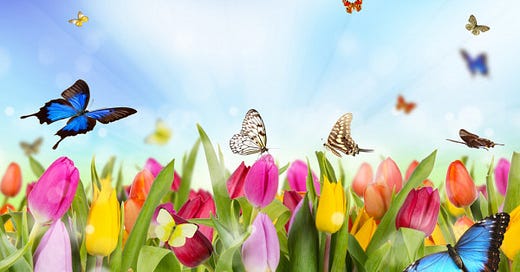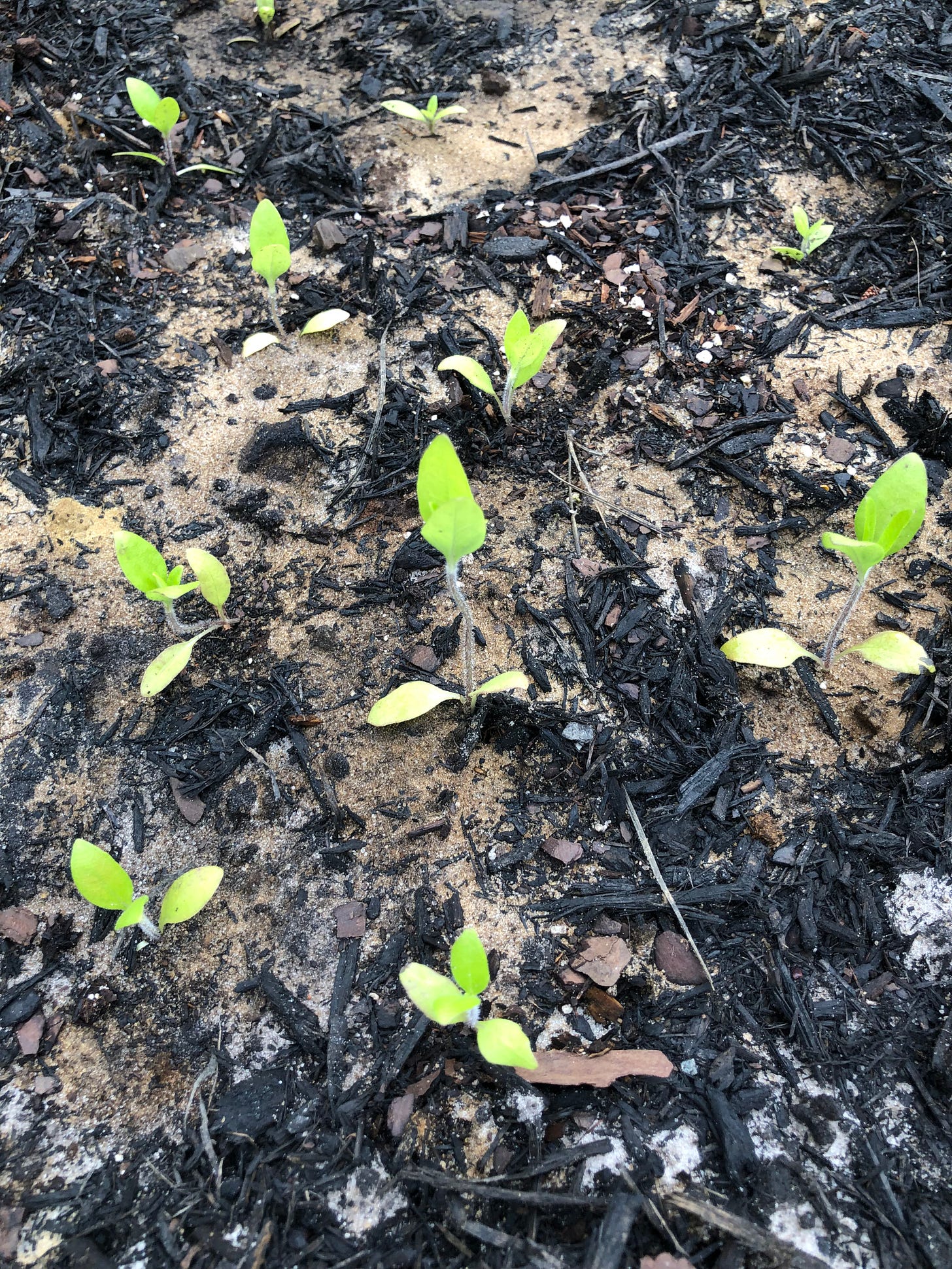Do Something Nice For Pollinators!
June is a fantastic month to talk about and do something nice for pollinators! Why? Because June 17th - 23rd is National Pollinator Week.
Seventeen years ago, the US Senate approved and designated a week in June to address the issue of declining pollinator populations. Word spread, and it has now grown into an international celebration honoring our world's winged and six-legged heroes who work so hard to provide a necessary service for humanity.
In most places, the whole month of June is dedicated to educating our communities about the plight of the pollinators while promoting pollinator health and well-being. People are encouraged to plant pollinator gardens and to mix some native trees, bushes, and wildflowers with their property's landscaping.
I got a late start on my pollinator gardens, but they are growing. I get such a thrill watching the seeds I gathered last year come back to life. It's like seeing old friends again. Watching the lance leaf coreopsis, blue mistflower, swamp sunflowers, fleabanes, and sneezeweed grow from tiny little seedlings reminds me of the ditches and roadsides where I originally found them, and I wonder if they are happier living here or if the wildflowers prefer their original haunts.
At any rate, I can't wait for them to grow up and attract butterflies, bees, birds, beetles, and other pollinators to my yard.
If you have a free subscription and want to read all my articles, please upgrade to a paid subscription
What Happened to the Pollinators?
Mother Earth's ecosystems were designed to benefit from each other. Vegetation provided food and shelter for all the creatures while in return, the critters ensured the plants and trees continued to thrive by pollination and seed dispersal.
The natural balance worked very nicely for millennia until humans got greedy and began destroying more and more native habitats to make way for farming and urbanization. The flowering bushes, weeds, wildflowers, and grasses tried to make a comeback, but the plants and trees didn't stand a chance between herbicides killing them off and invasive species choking them out. In addition to our mindless destruction of habitat, human-made pollution, chemicals, and pesticides have poisoned the land and plants. As habitat dwindled away, so did the pollinators.
In the USA, bumblebee populations have been severely decimated; one species is already feared to be extinct. The Rusty Patched Bumblebee was the first bee to be added to the US Fish and Wildlife Service's endangered species list, and more species will follow.
The Xerces Society's 2020 count of the Western Monarch Butterfly showed a shocking 99.9 percent drop in population since the 1980s. Only 1,914 monarchs were counted during the 24th Western Monarch Thanksgiving Count along the California and Northern Baja coast. The numbers have improved since then, but Xerces' 2023 tally of 233,394 butterflies overwintering population of western monarchs still remains at only around 5% of its size in the 1980s.
The time is now to remedy these dire statistics. It can be done, but it'll take everyone pitching in to help.
What Can We Do To Correct the Imbalance?
That's the whole idea behind June's pollinator awareness campaigns. First, learn about pollinators – who they are, what they do, and why they are so important – and then do what you can to help.
Bees, butterflies, birds, bats, beetles, and other insects, reptiles, and mammals collect and spread pollen grains as they drink nectar and/or investigate flowering plants, trees, and shrubs. Because of these guys, we have the fruits and veggies we depend on for survival.
We've all heard that pollinators are responsible for one out of every three bites of food we eat. Last year, one community in NC demonstrated that fact by having their downtown bakery highlight the ingredients of everything in their display case made by pollinators. Patrons discovered we need pollinators for the vanilla, chocolate, and spices to flavor the pastries, gooey chocolate chunk cookies, and birthday cakes. Seeing it like that reinforced the importance of pollinators in our everyday lives.
It's not just food plants that benefit from pollinators. Shade trees, sweet-smelling wisteria, veri-colored azaleas, and the brightly hued wildflowers we love to gaze at also depend on pollinators. Without them, the plants would not bloom, and we'd lose not only their beauty but also their root systems that aerate our soil and prevent erosion.
So that leads us to part two: what can we do about the pollinator crisis?
Join the Bug-a-thon
Whether you prefer a week or a month-long bug-a-thon, you can do plenty to observe the national pollinator awareness campaign.
Tell your friends and neighbors. Get them as excited as you are about rescuing bees, butterflies, and hummingbirds.
Plant something. You don't have to create a large garden or re-landscape your lawn. The pollinators would greatly appreciate a few pots on your patio containing native plants. It's quality, not quantity.
Plant for every season. Have a variety of plants that bloom throughout the year. For lists of pollinator-friendly native plants by region, check out this page from the Xerces Society.
Don't forget shrubs and trees. Complement your flowers with other native plants. Also, provide accommodations for your winged guests by hanging up some birdhouses, bee hotels, and even bat houses.
Participate in pollinator-related activities. Some communities have many activities planned for Pollinator Month; some don't. If your community lacks these, create your own.
1. Pollinator.org has information on some events.
2. You can also locate a Bee Cities USA/ Bee Campus USA near you to find out what they have going on in your area.
3. Try out some community science projects through the Xerces Society, Scistarter, or iNaturalist
4. Get involved with conservation organizations such as the Native Plant Society or others in your community.
However you plan on celebrating, enjoy Pollinator Awareness Week/Month. Do something nice for the hard-working creatures and remember: Stop Destroying and Start Restoring.
~~~~~~~~~~~~~~~~~`
I must confess that not all my flowers are from seeds I’ve gathered along the roadsides. A few weeks ago, I bought some native coreopsis, sages, and coneflowers from our local Native Plant Society’s plant sale. I planted the flowers with four American beautyberries I had dug up out of the woods and moved to my garden a couple of months prior. Believe it or not, they’re still alive and growing! I think the gnomes help.
Let’s Get Our Hands Dirty is a reader-supported publication. If you’re able and want to support my work, please consider signing up as a free or paid subscriber. I’d greatly appreciate it!







